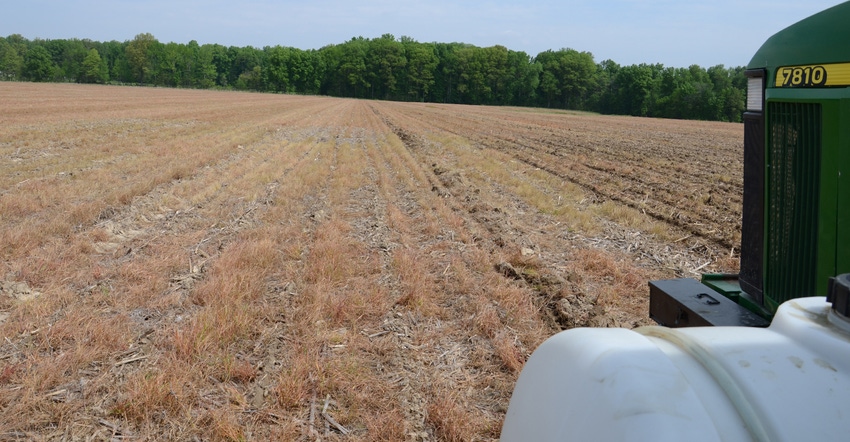
Don Donovan says American farmers face two challenges as we move through the 21st century. The first: Food must be produced in adequate quantities to feed the growing population. Technology has improved corn yields drastically over the last few decades, but will that continue, or will yields plateau?
Donovan is a district conservationist with the Natural Resources Conservation Service in Indiana.
He says the second major challenge is proactively addressing growing environmental issues. They include the hypoxia zone in the Gulf of Mexico, the algal blooms in the Western Lake Erie Basin and other challenges right here in Indiana. Many nutrients that cause these issues are being traced to soil erosion and water quality issues in the Corn Belt.
This information was prepared by Indiana Conservation Partnership members and other partners, led by Donovan and other NRCS personnel. They include Clint Harrison, district conservationist; Susannah Hinds, grazing specialist; Scot Haley, resource soil scientist; Kris Vance, public affairs specialist; Victor Shelton, state agronomist/grazing specialist; Tony Bailey, state conservation agronomist; and Shannon Zezula, state resource conservationist.
4 possible solutions
So how can agriculture be more proactive in tackling these issues? And how can Indiana agriculture work on both challenges at the same time? The answers lie beneath the soil’s surface, Donovan says. They involve maximizing the health of soil — making it more productive, resilient and efficient while reducing erosion and improving water quality.
Donovan works with farmers who have found a few basic principles that improve soil health. These four recommendations may test the management skills of some farmers, but they’re achievable and essential to changing the paradigm of farming for the 21st century, he believes.
1. Implement a never-till system. Notice this isn’t a no-till system or a no-till-most-of-the-time system, but a never-till system, Donovan says. Of course, you have to be flexible, but many years of soil health benefits can be undone by just one tillage pass. It’s important to address your nutrient and soil compaction issues before moving into a never-till system. Using cover crops and adapting your nutrient management are also critical pieces to this system. Never-till will take some management.
2. Start using cover crops. The list of benefits of cover crops is long: reduced soil erosion, more diversity in your cropping system to provide more food and habitat for the microbiology in the soil, and year-round growing roots to build soil organic matter and protect the soil. Benefits also include nutrient production and nutrient scavenging, weed suppression as part of an overall integrated pest management strategy, and winter grazing potential.
Start with something simple, Donovan suggests. Try a plant that will winter-kill; then move into more challenging cover crops and mixes. Have a plan and a purpose in mind when you develop your mix. Know how you will plant the cover crop. Have a termination plan with a contingency plan, and understand that cover crops require another level of management.
3. Adapt your nutrient management. Each farm is different, and as your soil health improves, so will the nutrient cycling, availability and use efficiency on each field. Donovan suggests starting with as precise of a system of soil testing and nutrient applications as possible. Test various nutrient management rates, placements, timing and products. Find what works best for your crops to maximize your nutrient use efficiency.
4. Install conservation buffers. Your yield monitor will show you areas that are low-yielding each year, Donovan says. Consider seeding them down as buffers and saving the time and inputs. Invest those in the rest of your farm. These buffer areas, once seeded, will filter water before it leaves your farm. There are programs available to help offset the lost acres. You will be doing more to protect the water quality in your community, Donovan concludes.
About the Author(s)
You May Also Like




